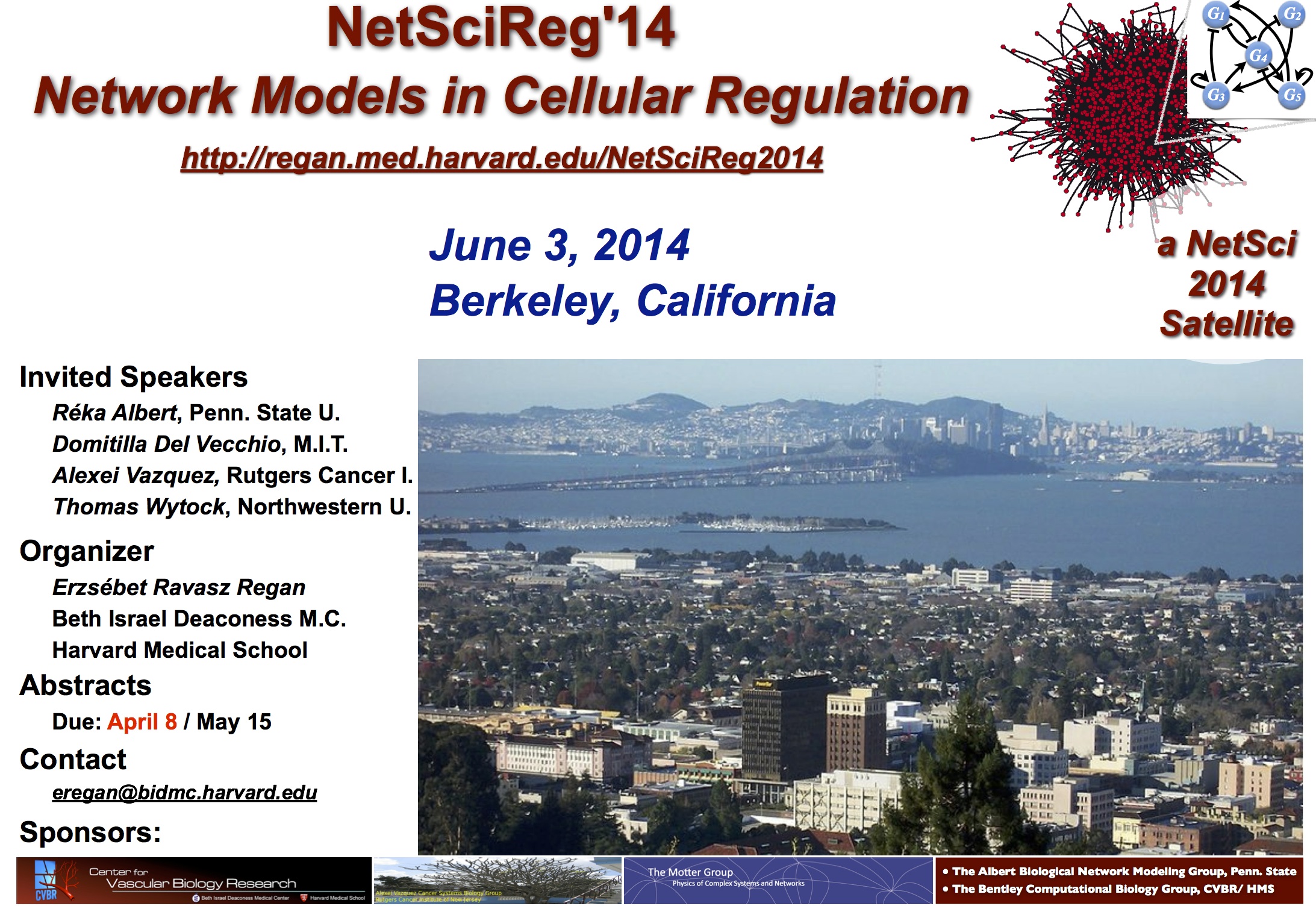NetSciReg'14 - Network Models in Cellular Regulation
June 3, 2014 - Berkeley, California
| Synopsis |
| Program |
| NetSciReg'14 Flyer |
| Important Dates |
| Registration |
| Call for Contributed Talks |
| Logistics |
| NetSci 2014 |
| NetSciReg'13 |
| Sponsors |
|
Time: 10:00 - 10:30 AM
Type: Winning contributed talk
Affiliation: 1Departments of Statistics, University of Nebraska - Lincoln
Abstract Complex and stochastic mechanisms that regulate transcription in higher eukaryotes may be obscured by numerous false negative or positive chromatin immunoprecipitation observations. To overcome this challenge, we analyzed an extremely tightly co-regulated system, the ~180 genes that code for ribosomal proteins. To satisfy the needs for the translation on ribosomes, "supramolecular factories" of protein synthesis, these genes form the most intensively transcribed system in most organisms. Because of the high energetic costs of massive RNA production, it is rapidly downregulated under adverse environmental and cellular conditions. We re-analyzed ~45 million mappings of transcriptional regulators to the human genome by the Encyclopedia of DNA Elements (ENCODE) experiments. We found that ribosomal genes are co-regulated by a richly interacting ensemble of no less than 158 jointly binding pairs and 83 triplets of transcription factors and histone remodeling enzymes. The ensemble integrates signals from the mTORC1, JAK/STAT, PI3K, leptin, and insulin networks. Machine learning methods accurately distinguished chromatin patterns of ribosomal protein genes from those of non-ribosomal genes including other highly expressed genes. Ubiquitous features of the ensemble include TATA-boxes that determine a single direction for intensive transcription and recruit specific and unusually large pre-initiation complexes. Rich, nonlinear interactions of KAT2A, REST1, MYC, SIX5, and other regulators selectively activate or repress multiple functions of these agents thereby facilitating rapid responses to modified conditions. We found novel regulators implicated in nonlinear transcriptional amplification (steep induction of a large number of genes targeted by MYC and MAX), and extend amplification to embryonic stem cells. In conclusion, ensemble mechanisms provide powerful, resilient and evolvable ways to regulate large gene systems and hence key biological processes such as translation on the ribosomes. The ensemble mechanisms observed in genes of ribosomal proteins may serve as a model for several other gene systems as well. |
SPONSORS: |





